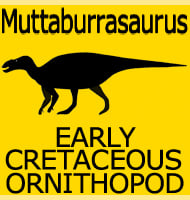Eolambia
In Depth Eolambia was established after the remains of several individuals were found in the Carol Quarry of the Mussentuchit Member of the Cedar Mountain formation, so named after Carol Jones who first discovered the remains with her husband Ramal in 1992. The name Eolambia means ‘dawn Lambe’, a reference to the last name of … Read more
